Chicken roulade is a classic French dish that has stood the test of time Literally meaning “rolled” in French, the word roulade signifies a dish where thin slices of meat are rolled around a filling While roulades can be made with beef, veal, or pork, chicken roulade is one of the most popular iterations of this dish.
A Brief History of Chicken Roulade
The origins of chicken roulade can be traced back to France, where roulades and other rolled meat dishes were common. The French word “rouler” means to roll, and roulades were a creative way to stretch expensive ingredients like meat by combining them with cheaper fillings. Over time, chicken roulade grew in popularity and spread to other European cuisines before becoming a worldwide classic.
Traditional Ingredients in Chicken Roulade
While variations abound, a traditional chicken roulade is made by pounding chicken breasts thin, then rolling them around a flavorful filling. Common fillings include:
- Cheeses like goat, feta, parmesan, Swiss, and cheddar
- Cooked vegetables like spinach, mushrooms, and roasted red peppers
- Fresh herbs like parsley, thyme, oregano, and tarragon
- Cured meats like prosciutto, bacon, and ham
- Savory binders like cream cheese, ricotta, or mustard
The thin chicken cutlets keep the roulade tender, while the filling provides moisture and flavor. Once rolled, the roulades are tied up with kitchen twine and seared to develop a nice crust. Then, they are roasted or braised in flavorful liquid like wine, broth, or lemon juice until cooked through.
Mastering the Technique of Chicken Roulade
Perfecting chicken roulade requires some technique. Here are a few tips:
-
Choose skinless boneless chicken breasts and pound them thin between sheets of plastic wrap or wax paper. They should be about 1/4-inch thick.
-
Season the chicken cutlets well with salt and pepper before adding the filling. This boosts flavor
-
Spread the filling in an even layer, leaving a 1/2 inch border. Roll up the breasts neatly, then tie them at 1-inch intervals with kitchen twine.
-
Make sure to sear the roulades first to brown them before braising in liquid. Deglaze the pan to make a sauce.
-
Let the braising liquid reduce to intensify the flavor. Finish with butter or cream for a lush sauce.
-
When serving, remove the kitchen twine and slice the roulades into rounds. Fan them out on a platter and spoon the sauce over the top.
Getting Creative with Fillings and Sauces
Once you’ve mastered the basic technique, the possibilities for customizing chicken roulade are endless. Switch up the fillings based on what’s in season, global cuisine flavors you love, or favorite flavor combinations.
Some tasty fillings to try include:
- Pesto, sun-dried tomatoes, and mozzarella
- Curried lentils and gruyere
- Caramelized onions and gorgonzola
- Chorizo, manchego, and roasted peppers
For the braising liquid, wine or broth can be switched out for juices, purees, or rich sauces:
- Lemon or orange juice
- Tomato puree or marinara sauce
- Coconut milk
- Creamy mustard or herb sauce
- Mole sauce
With so many options for fillings and sauces, chicken roulade can be transformed into a completely different dish every time you make it.
Benefits of Chicken Roulade
Beyond being delicious, chicken roulade has some excellent benefits:
-
It transforms boring chicken breasts into a restaurant-worthy entree.
-
The filling adds moisture and flavor to lean chicken.
-
It’s elegant enough for entertaining but easy enough for weeknights.
-
Leftovers make excellent sandwiches or salad topping.
-
Once the technique is mastered, it can be whipped up quickly.
-
Kids love the fun shape and flavors. It’s great for picky eaters.
-
The portions are convenient. Make as few or as many as you need.
Tips for Perfect Chicken Roulade Every Time
Like any technique-driven dish, chicken roulade improves with practice. Follow these tips for roulade success:
-
Pound the chicken very thin so it rolls up easily. Erring on the thin side is better than too thick.
-
Chill the rolled roulades before cooking so the filling stays put.
-
Dry the chicken well before searing to achieve a nice browned crust.
-
Use a skillet just large enough to hold the roulades flat. Crowding the pan can make them steam instead of brown.
-
Reduce the braising liquid enough to create a silky sauce that clings to the chicken.
-
Let the roulades rest 5 minutes after cooking. Then remove the twine and slice into rounds.
-
Garnish the platter with chopped herbs or edible flowers for a pretty presentation.
-
Serve chicken roulade with rice, orzo or creamy polenta to soak up the luscious sauce.
An Enduring Classic for All Occasions
In the world of constantly evolving cooking trends, chicken roulade endures as a timeless classic. The technique provides a vessel for creativity, allowing infinite flavor combinations within an elegant and impressive package. Best of all, chicken roulade pleases a crowd, making it a go-to dish for entertaining or family meals. Once you master this French favorite, it is sure to become a regular star in your dinner rotation.
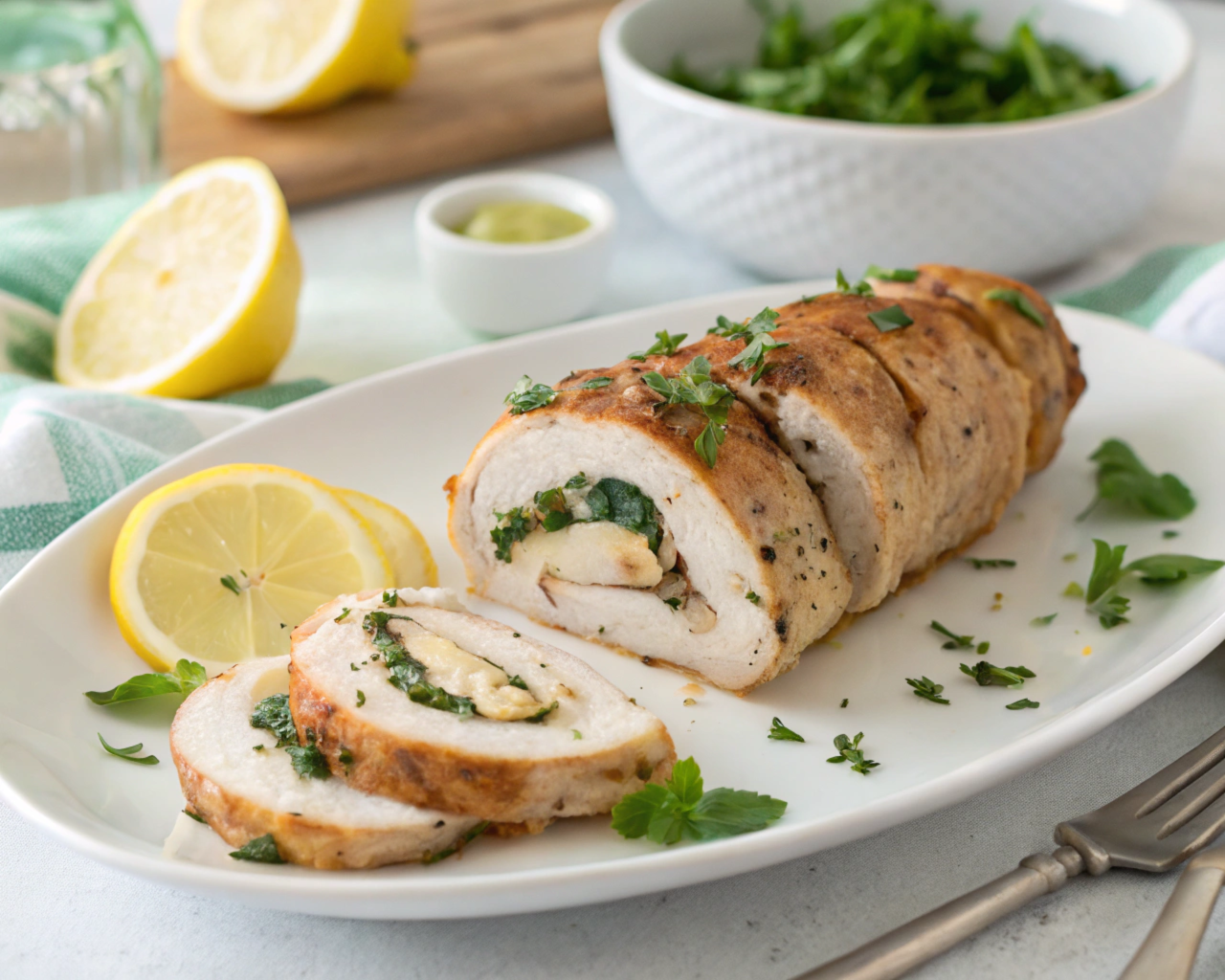
Other Chicken Roulade Filling Ideas
The mixture of the tomato, Provolone, basil and prosciutto in this recipe is amazing, and I hope youll try it. However, you can use a variety of things to fill your roulades, and its fun to experiment with different ingredients. The technique in the instructions for this recipe can be applied to all of them. Below are several tasty ideas:
- meats – Here are a few meats that work well: thinly sliced salami, pancetta, ham, prosciutto or loose sausage meat (I like spicy Italian).
- vegetables – Leafy greens are my favorite because of the color they add and they dont have to be cooked first. Spinach, kale, Swiss chard, steamed and finely chopped broccoli and steamed asparagus (placed in the center, horizontally) are all great. Thinly sliced sautéed mushrooms are also lovely.
- cheeses – All sorts of cheeses can work well in a chicken roulade recipe — soft or hard. Cheeses can be grated, thinly sliced or crumbled into the roulade. A few ideas include grated or thinly sliced Guryère, Swiss, Fontina, Cheddar, Asiago, Provolone , crumbled Feta, Gorgonzola or Blue cheese. (A thinly spread layer of soft goat cheese is also fantastic.)
- fresh herbs – Basil is a great choice because the leaves can more or less lay flat. Most other fresh herbs should be roughly or finely chopped when used in a roulade recipe. No fresh herbs are off limits.
- spreads and other filling ideas – Creative pestos are easy to use on their own as a filling. I love Roasted Red Pepper Pesto, Lemon-Basil Pesto and Lemon-Caper Pesto. A spread of sweet caramelized onions is also amazing, and of course, so is a spread of marinated sun-dried tomatoes or chopped olives.
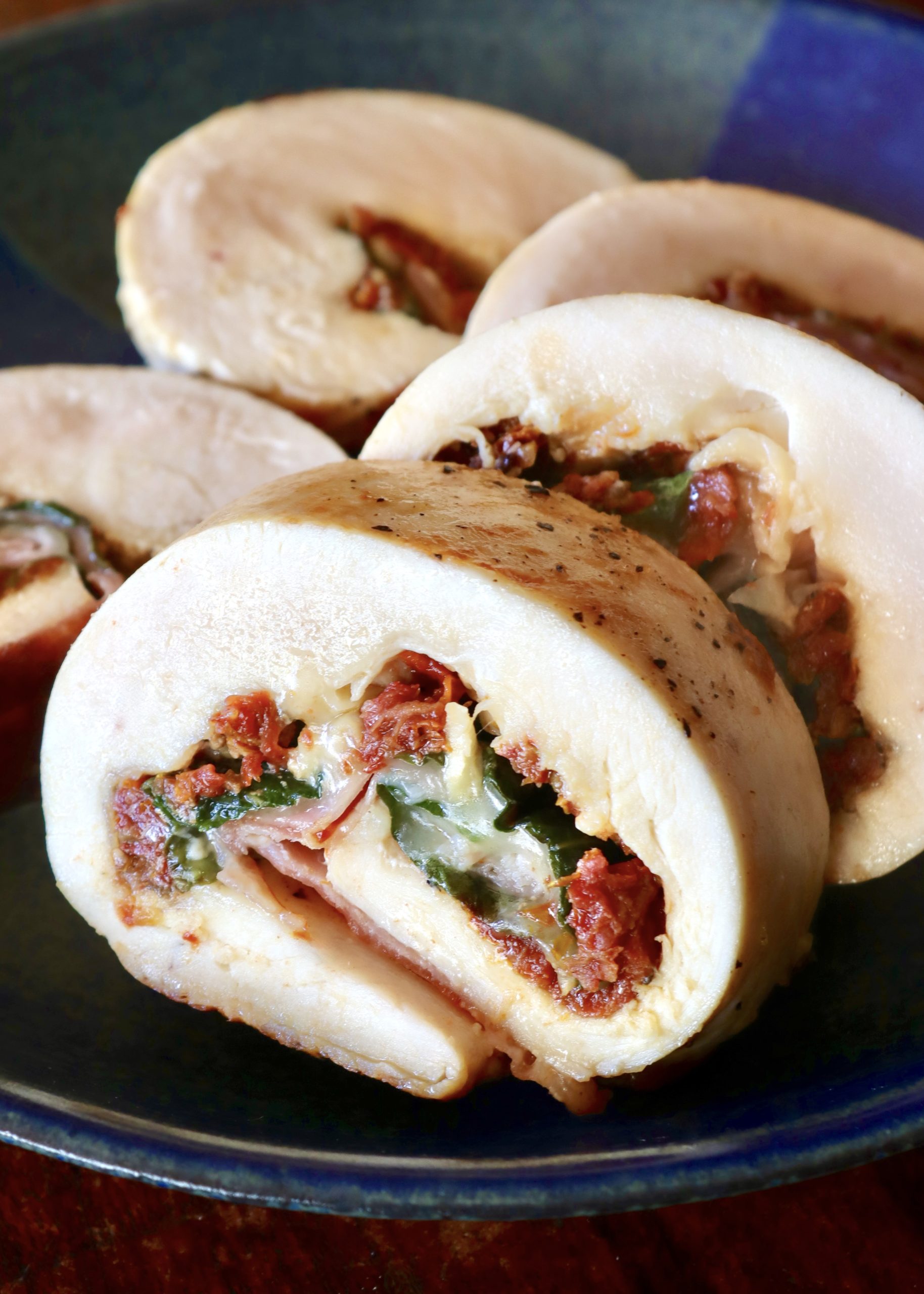
The possibilities are endless when it comes to combining ingredients to fill a chicken roulade with. While you can certainly use just one ingredient, like pesto, its fun to get creative. Below are several combinations to try or to inspire you:
- pesto, fresh spinach and prosciutto
- caramelized onions (link above), spicy Italian sausage and spinach
- ham and Gruyère with finely chopped fresh thyme
- asparagus, prosciutto and Fontina
- goat cheese, spinach and sun-dried tomatoes
- Swiss cheese, kale and caramelized onions
- cheddar cheese and broccoli
- Feta, Kalamata olives, basil and sun-dried tomatoes
How to Make it
– Trim any excess fat off of the chicken breasts and place a large piece of plastic wrap on a flat, dry surface. Place two of the chicken breasts, smooth side up, on top, and a second piece directly on the chicken.
– Use the smooth side of a meat mallet to pound the chicken until its evenly flattened, about ¼ to ½-inch thick. Repeat this with the remaining chicken.
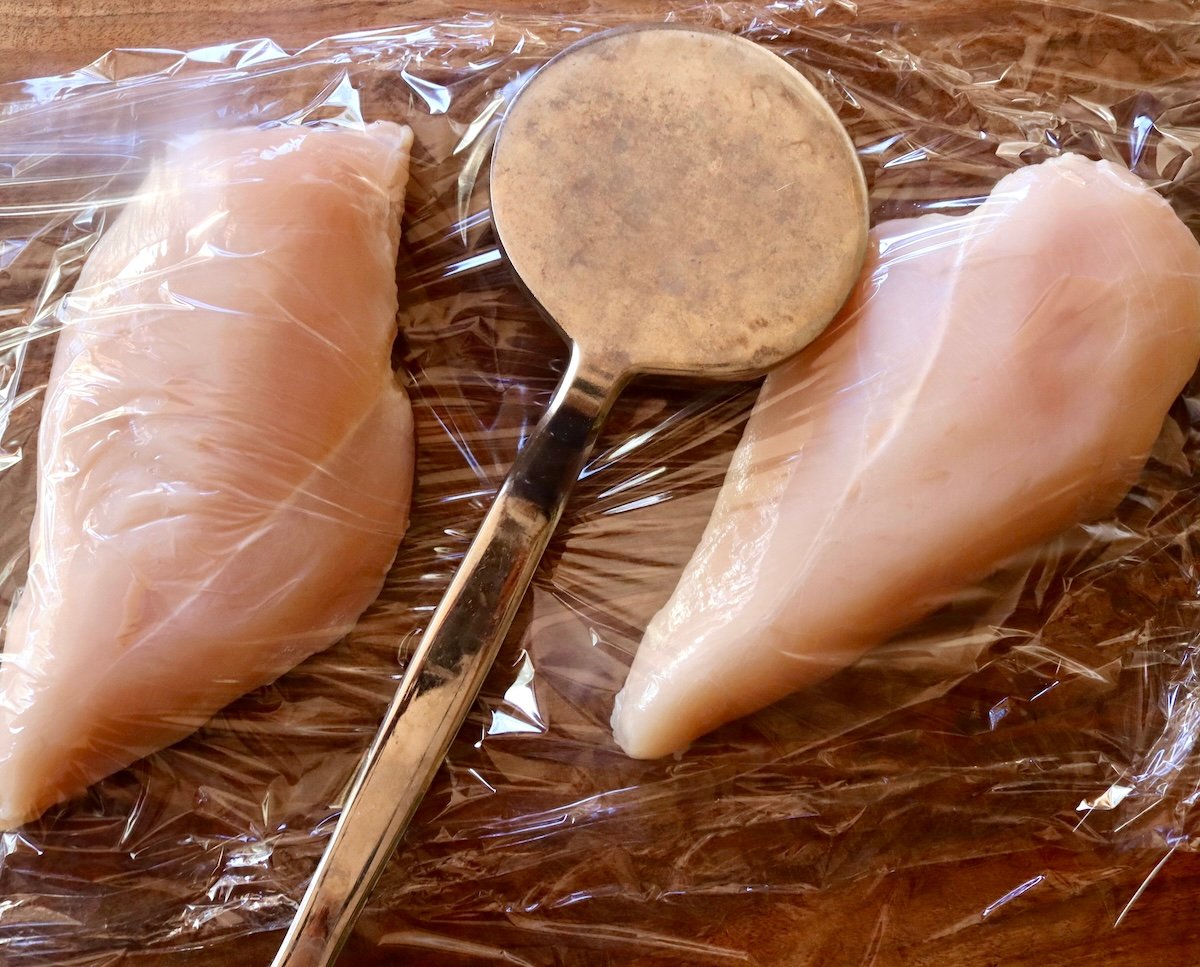
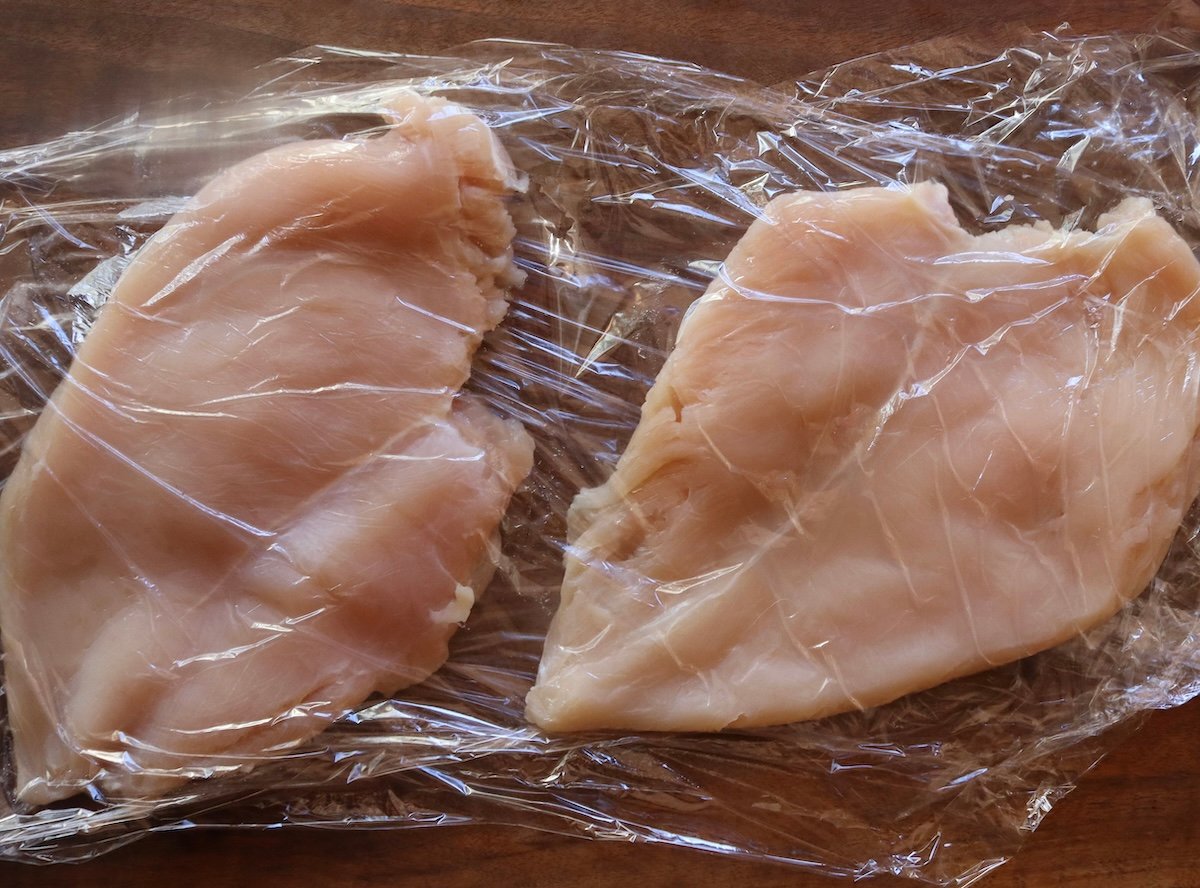
Pro Tip: If you dont have a meat pounder, you can use the bottom of a small sauté pan or a rolling pin.
– Turn the chicken breasts over, so the smooth side is now down, and they are laying vertically in front of you. Sprinkle with salt and pepper.
– Add about 2 tablespoons of the sun-dried tomatoes to each one, spreading it evenly. Then gently press basil leaves on top, enough to cover all but the top couple of inches in a single layer. Slice the Provolone slices in half and place them on top of the basil, again leaving the top couple of inches clear.
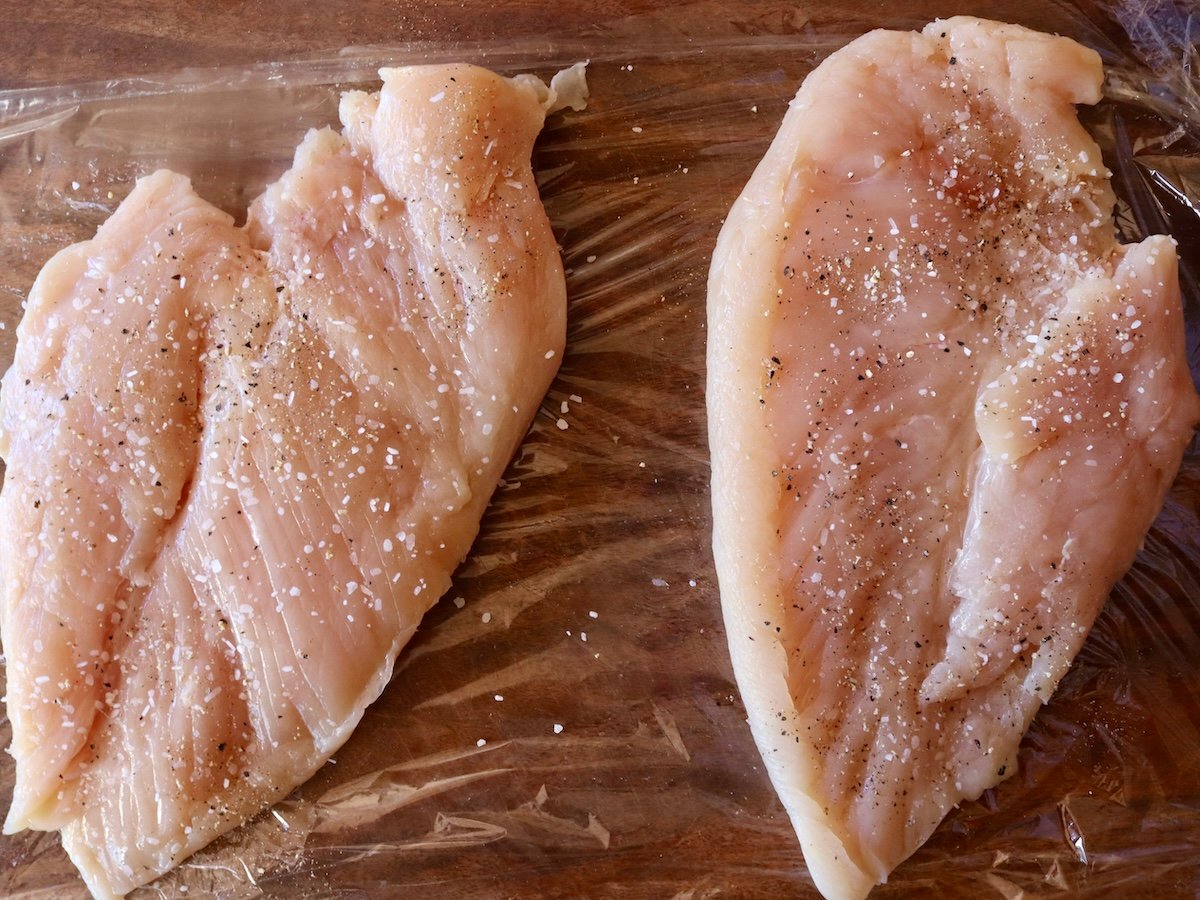
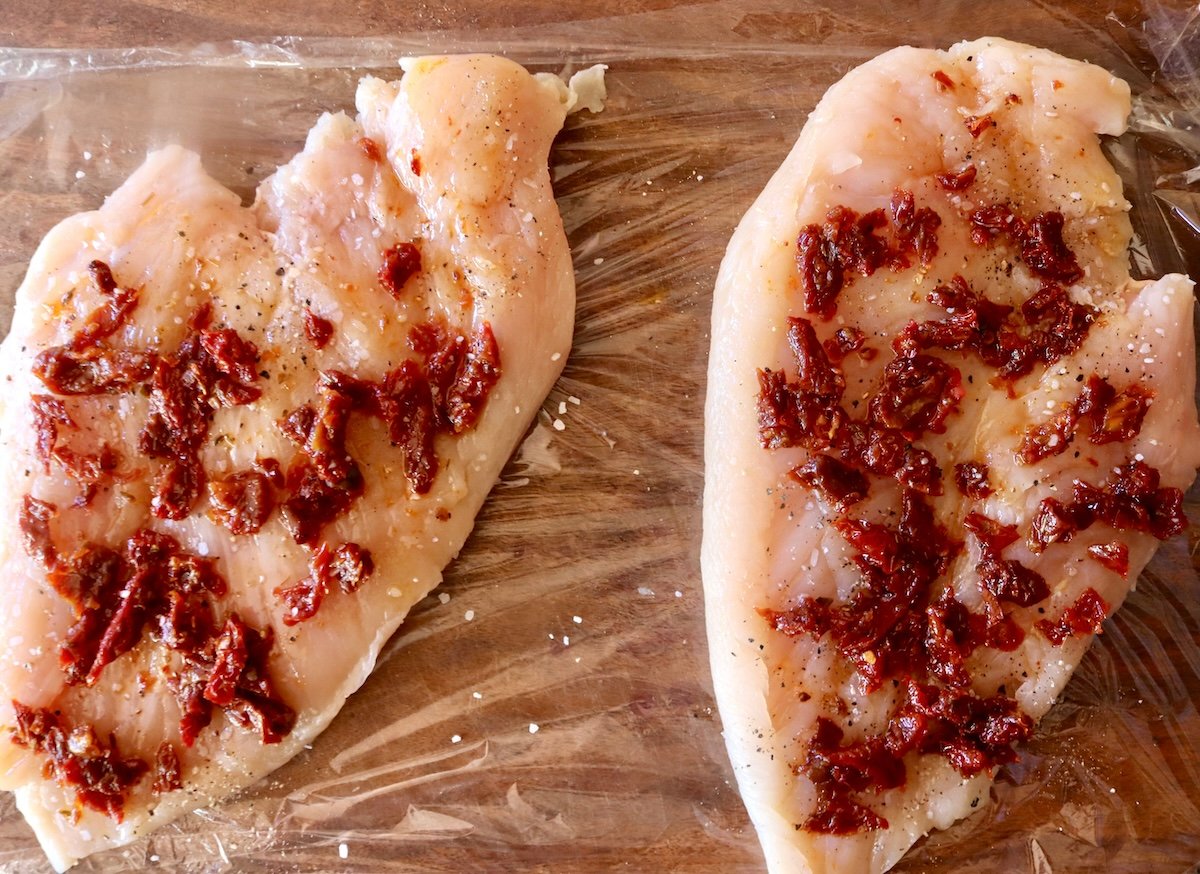
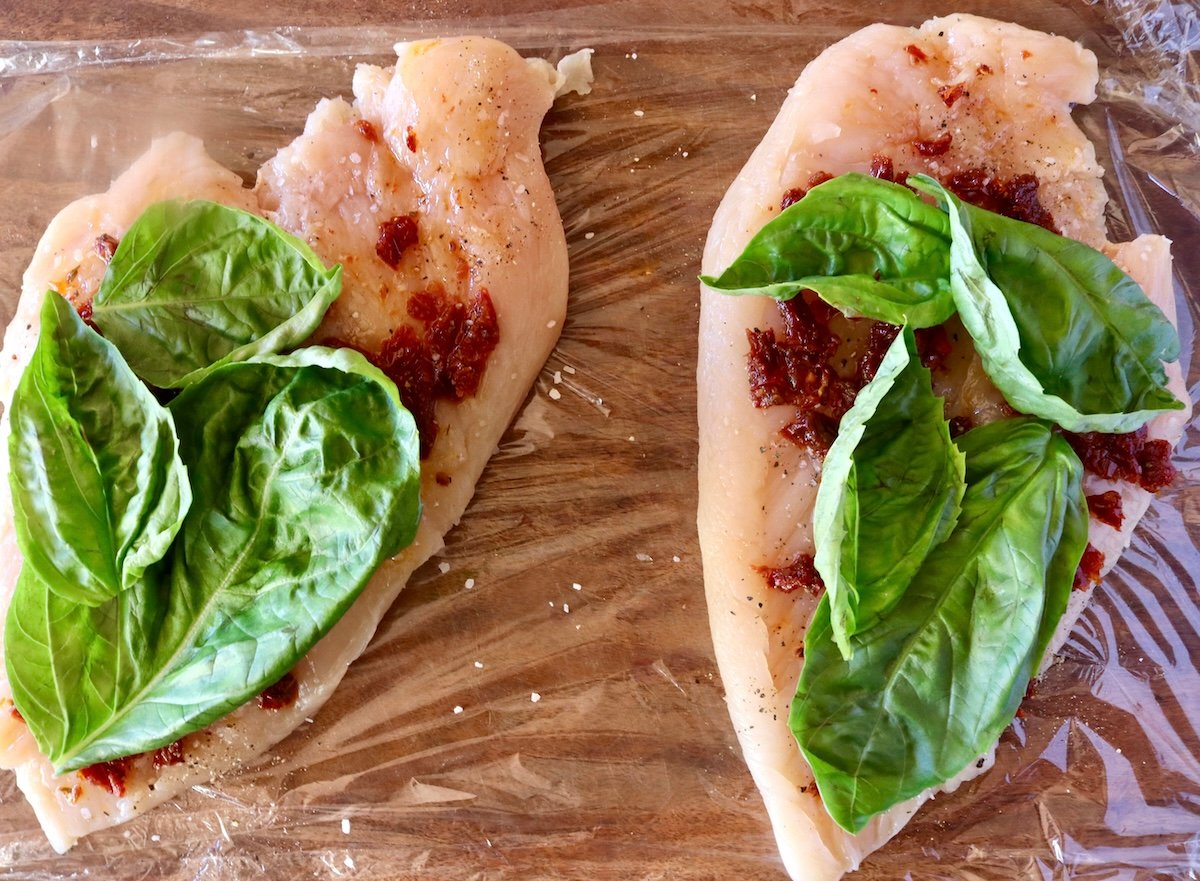
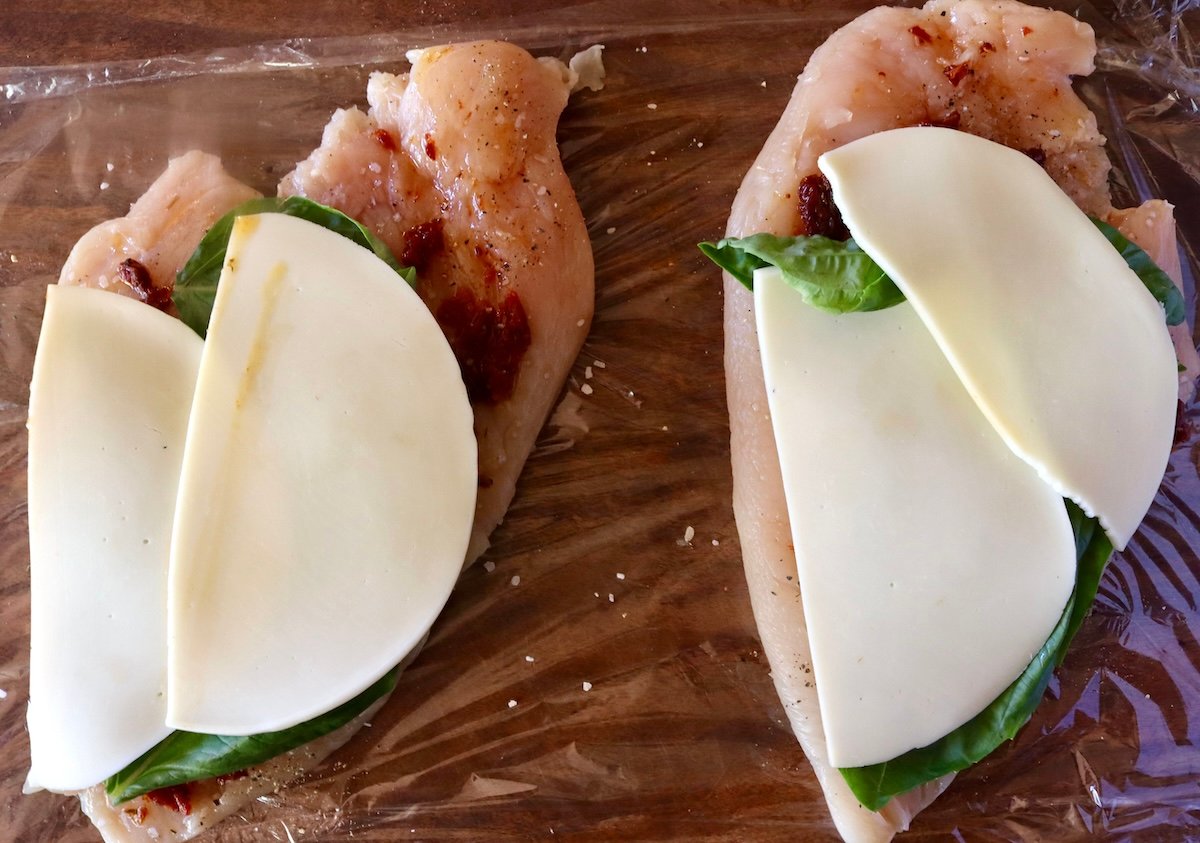
– Finally, place the prosciutto slices on top, and beginning with the end closest to you, roll the chicken as tightly, and evenly as you can, away from you.
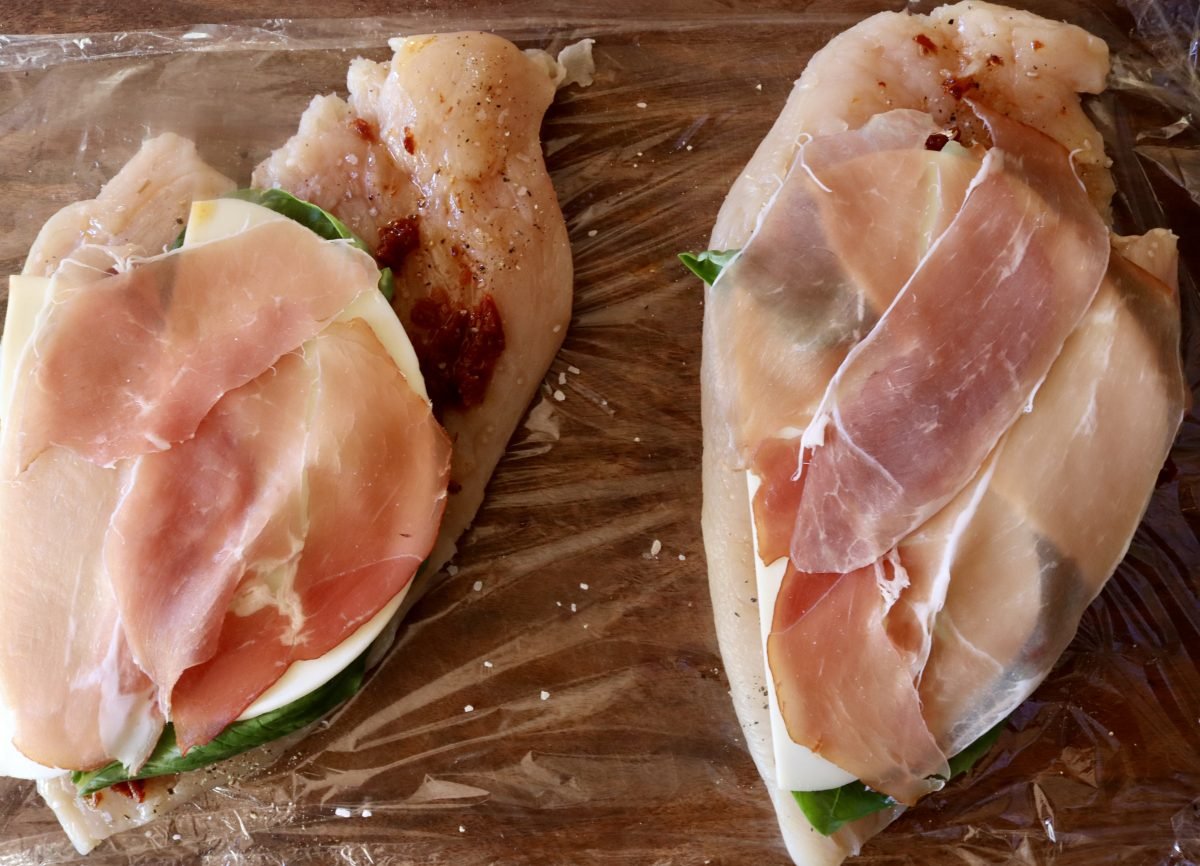
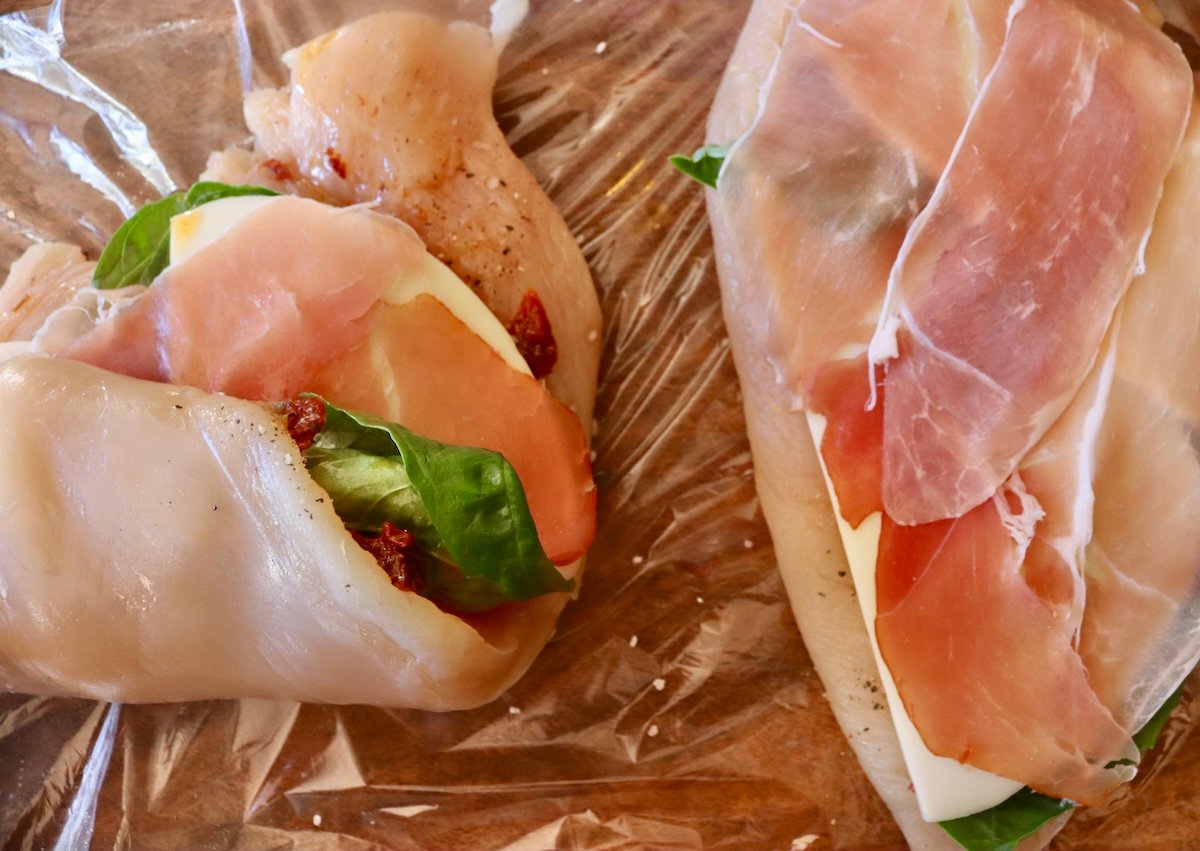
– Then place each roll on its own piece of plastic wrap and wrap it very tightly, twisting the ends (like a tootsie roll). Refrigerate them for at least 1 hour, and up to 1 day.
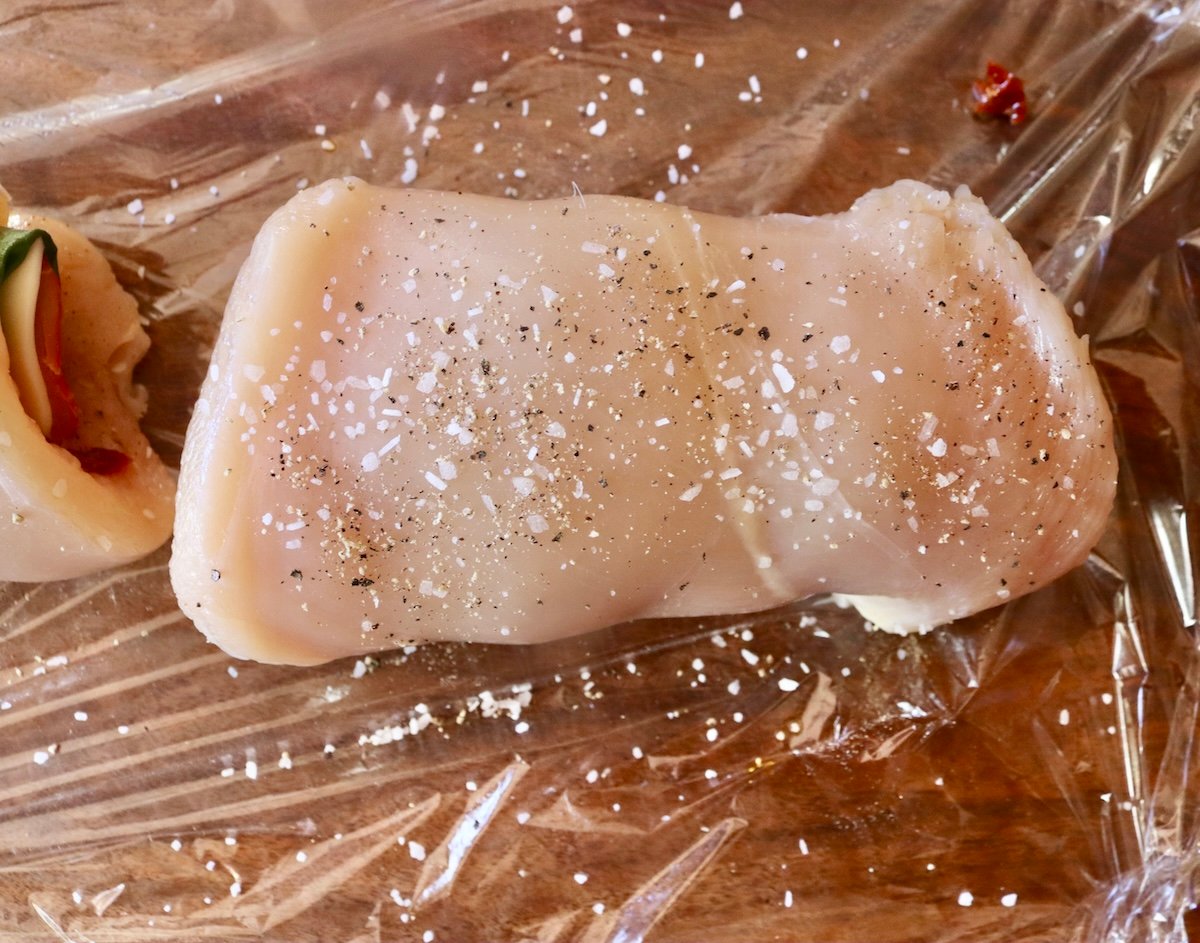
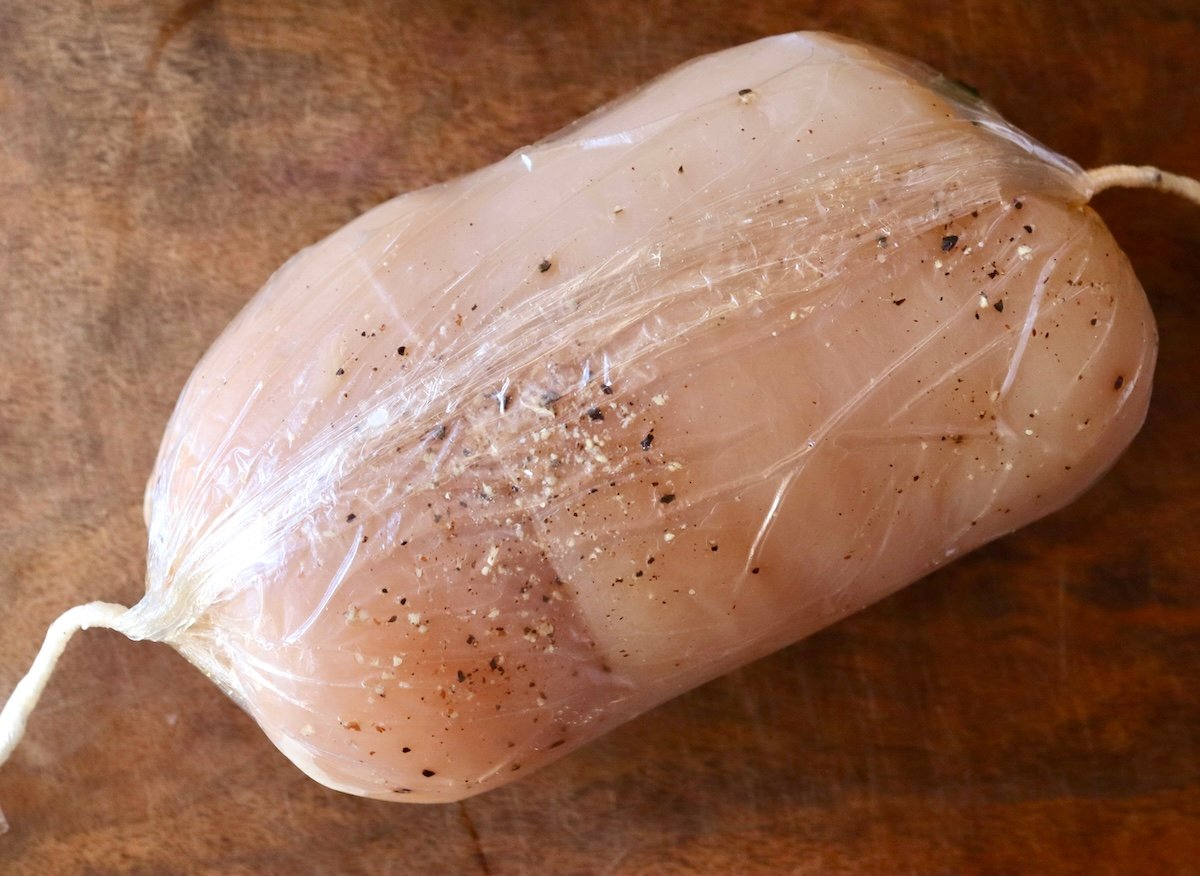
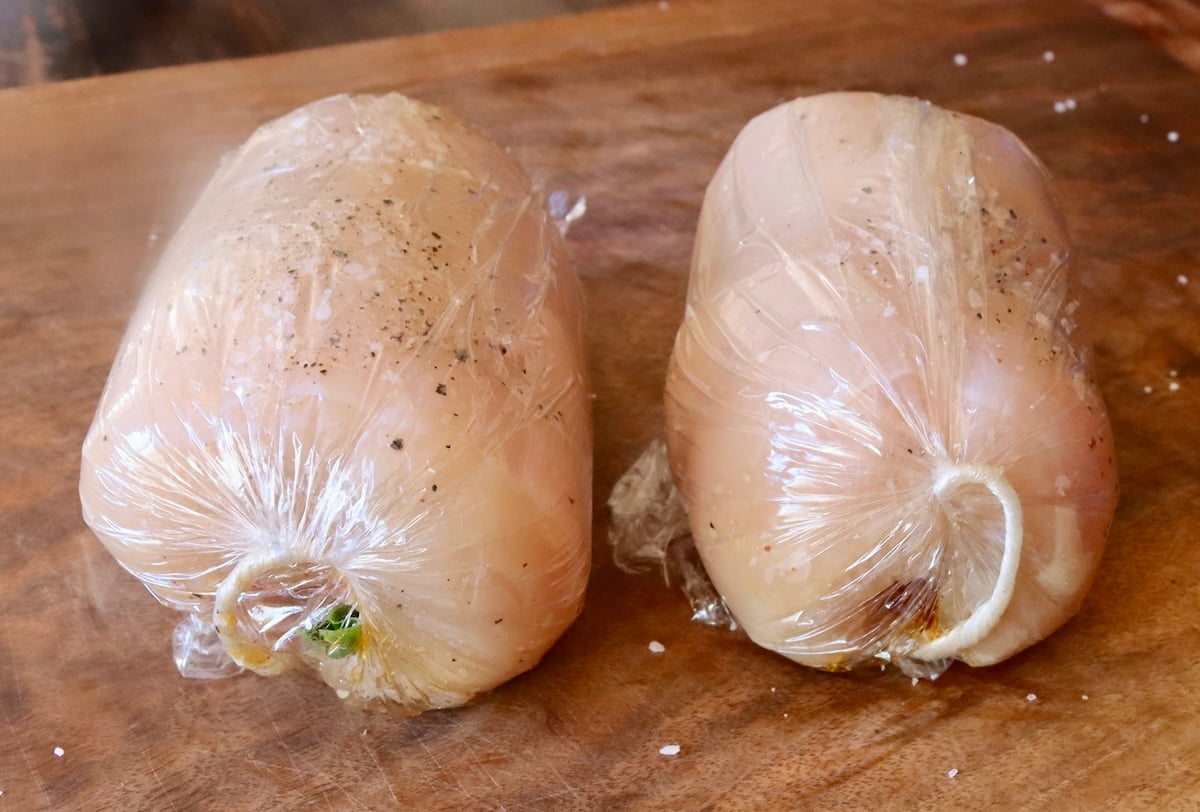
– Coat the bottom of a large sauté pan (ideally non-stick) with olive oil and place it over high heat. Unwrap the chicken rolls and once the pan is very hot add them, seam side up. Use kitchen tongs to gently hold them together if you see them opening. Flip them after just a minute or so — this is just to brown them.
Recipe Tip: Be sure the pan is very hot when you add the rolls — you should hear a sizzling sound, otherwise they wont brown.
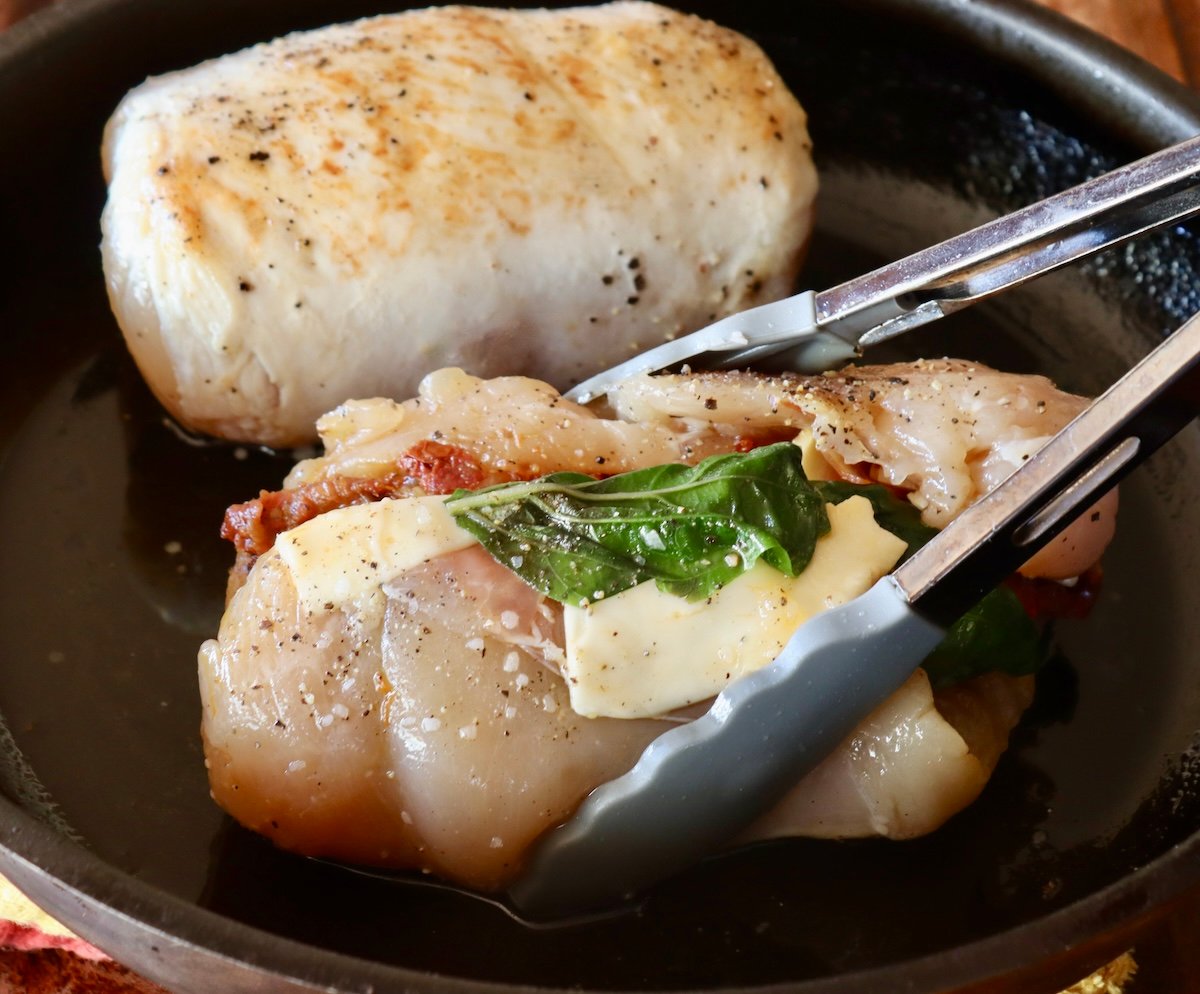
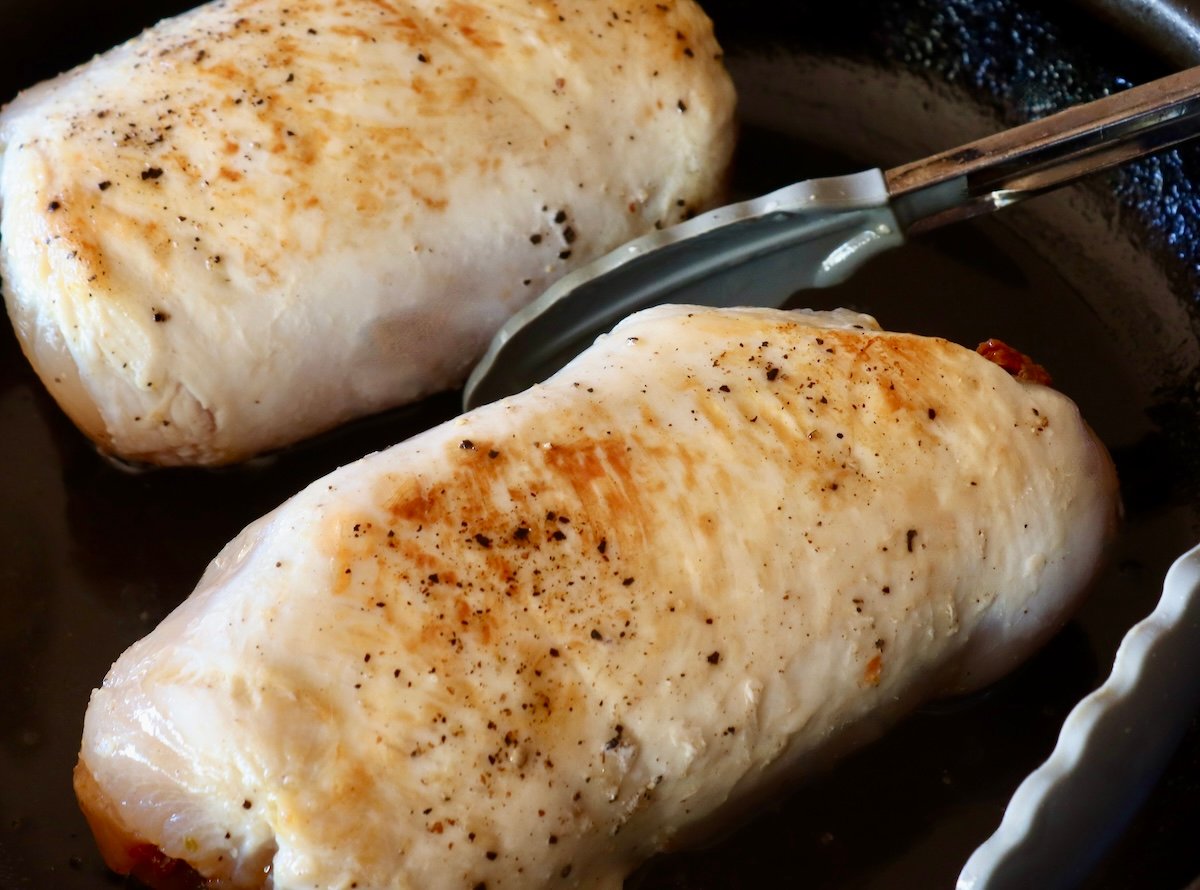
– Now with the seam side down, turn the heat to low, cover the pan, and cook until the chicken is cooked through, about 15 minutes.
Recipe Tip: Do not crowd the pan! Make sure theres at least a couple of inches between the rolls. If you dont have a large enough pan, brown them in two batches, and then when youre ready to put the lid on to finish the cooking, you can put them all together (as long as theyre not touching).
– Slice and serve.
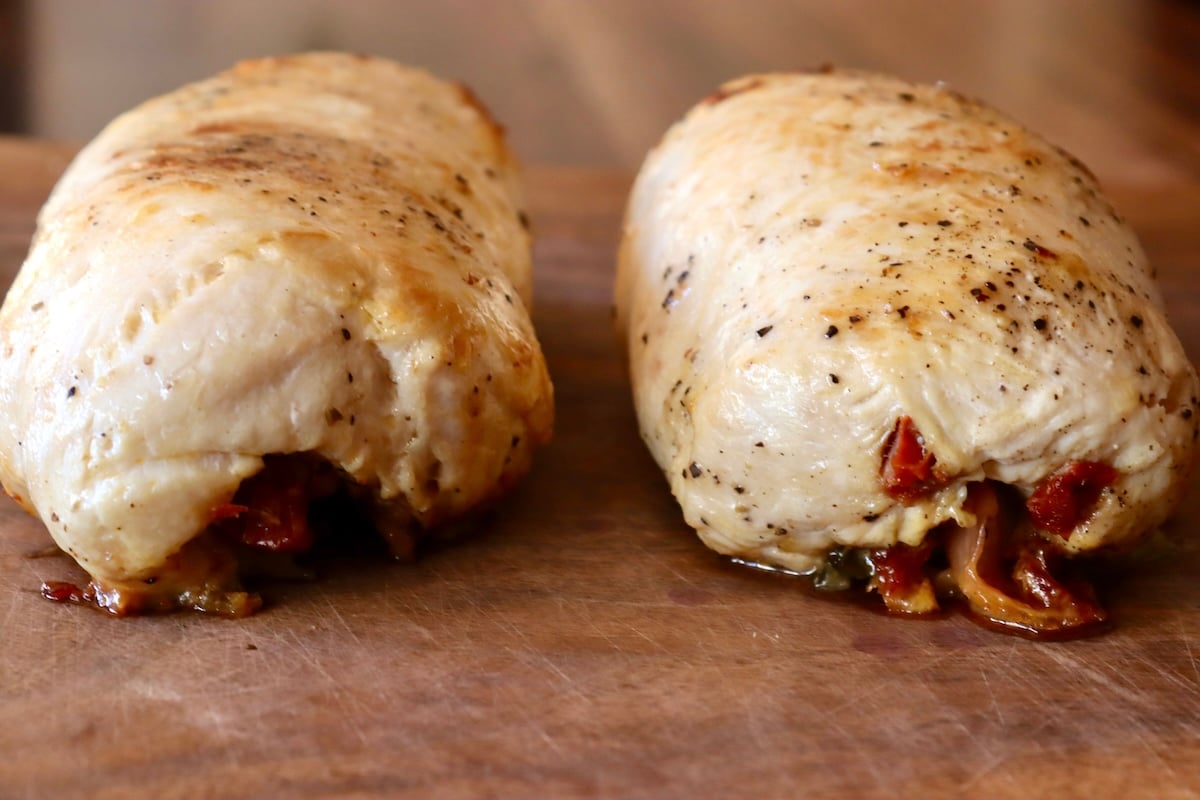
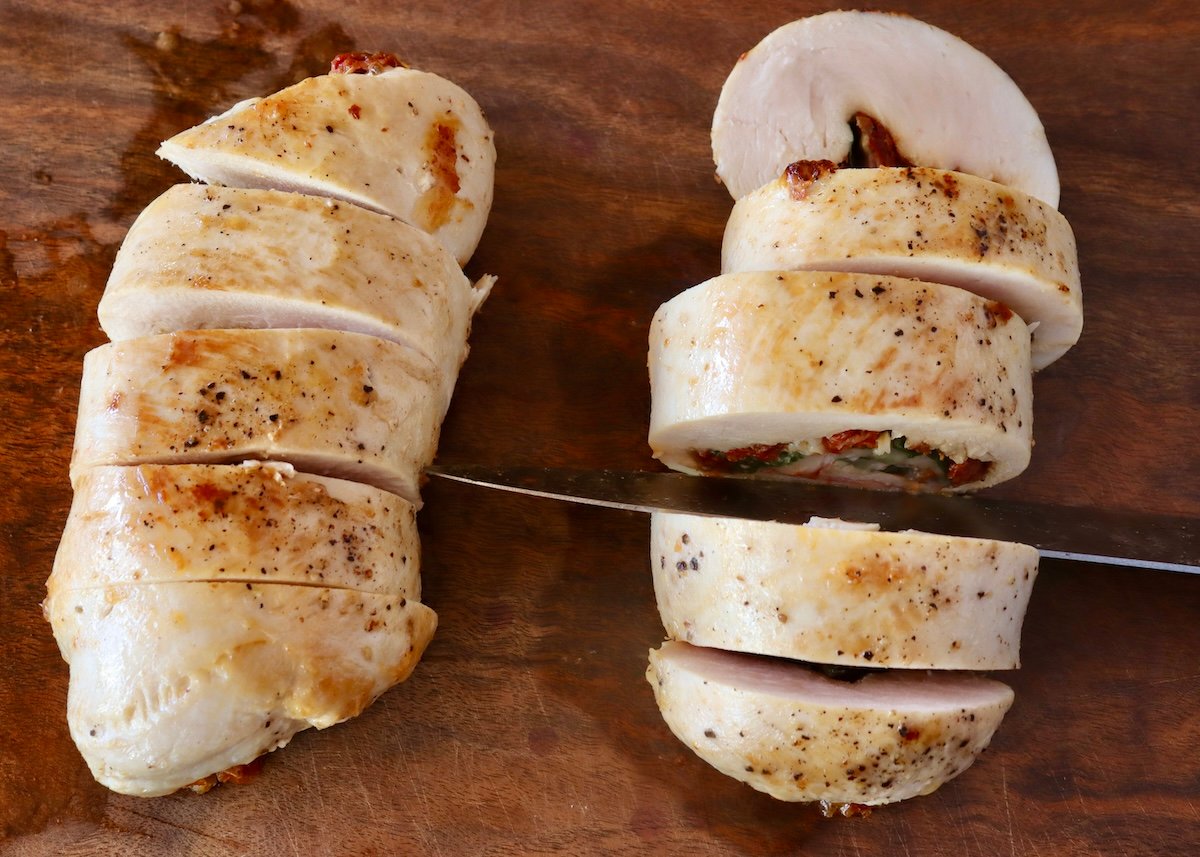
You can serve the chicken without slicing it if your prefer. Its fun to cut into when you dont know what youre expecting. (For guests.)
This dish goes really well with sides of rice, salads and vegetables. Here are several of my favorite recipes to serve with it:
- You can prepare the roulades up to the refrigeration step, up to a day ahead of time. Then, when youre ready to serve them, all you have to do is cook them (about 15 minutes.)
- You can also freeze the prepared raw roulades wrapped in the plastic wrap and in a freezer bag, for up to 4 weeks. Defrost them in the refrigerator at least 1 day before you want to cook them.
- The chicken will have the best texture and be the juciest, closest to the time its cooked.
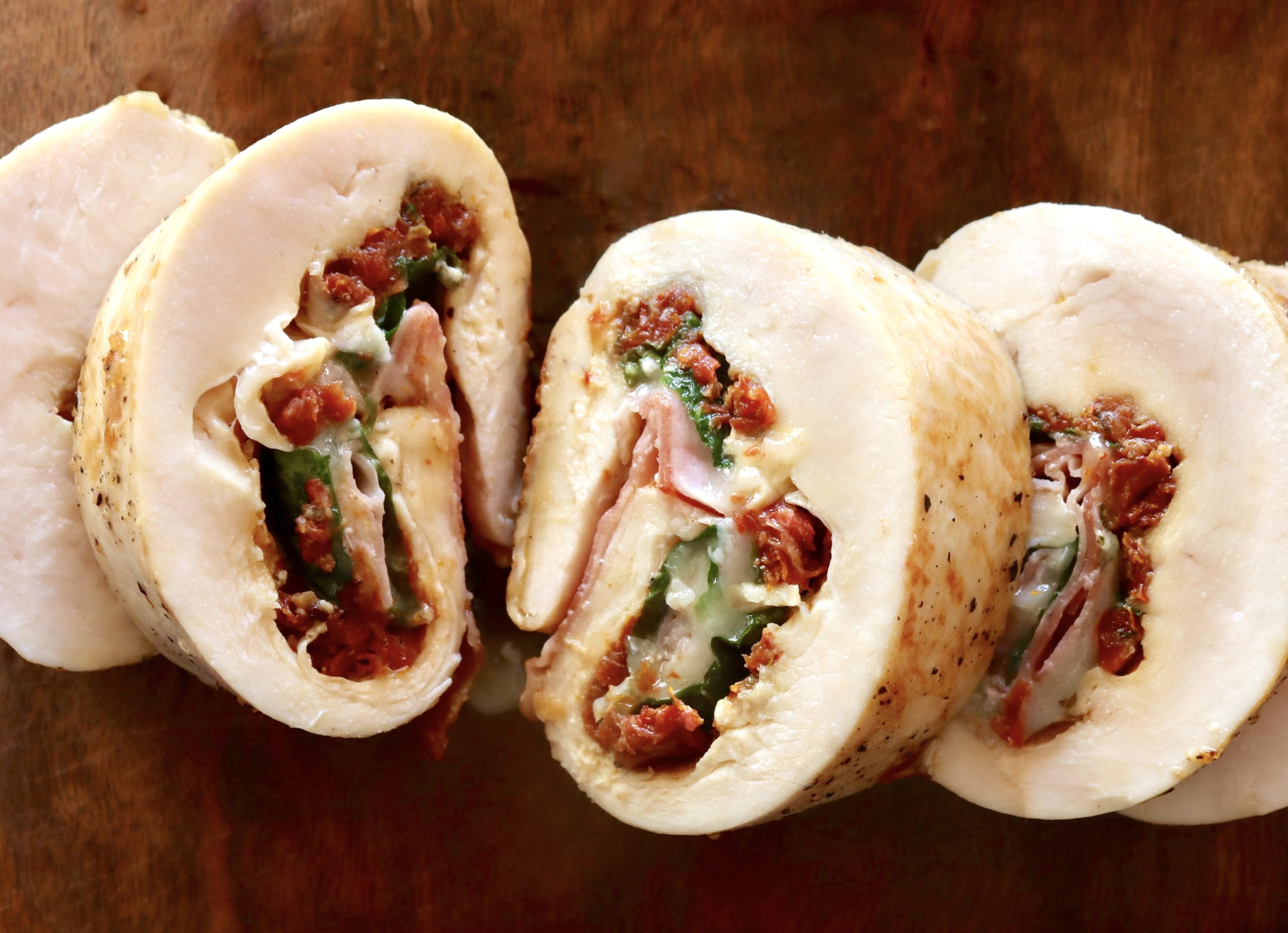
How To Make A Chicken Roulade
FAQ
What is chicken roulade?
Chicken roulade is a dish where boneless, skinless chicken breasts are flattened, filled with a stuffing, and then rolled up and cooked.
What is the meaning of roulade?
A roulade (/ruːˈlɑːd/) is a dish of filled rolled meat or pastry. Roulade can be savory or sweet. Swiss roll is an example of a sweet roulade. Traditionally found in various European cuisines, the term roulade originates from the French word rouler, meaning “to roll”.
What is the origin of the chicken roulade?
Chicken roulade gets its name from the French word rouler (meaning to roll). The concept is global: In Italy, thin cuts of meat rolled around savory fillings are called involtini, while a Polish beef version goes by zrazy. (We could go on.)
What is another name for chicken roulade?
Chicken roulade or ballotine. This time a super classic technique, but definitely not a boring old school dish. We’re going to debone a whole chicken and turn it into a roulade or ballotine. I’m serving it with a creme de volaille, a mushroom cream and a parsley oil.
